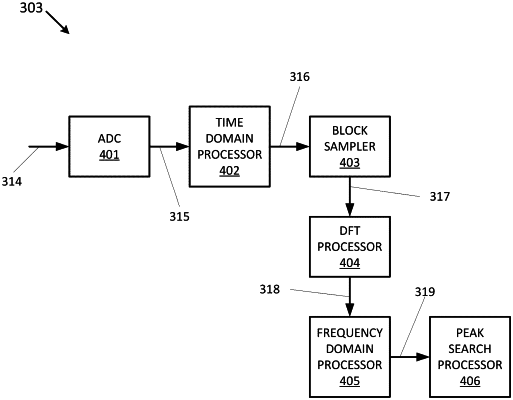| CPC G01S 17/10 (2013.01) [G01S 7/4865 (2013.01); G01S 7/4873 (2013.01); G01S 7/493 (2013.01)] | 20 Claims |

|
1. A method comprising:
transmitting, toward a target in a field of view of a light detection and ranging (LIDAR) system, a transmitted optical beam comprising at least one up-chirp frequency and at least one down-chirp frequency, wherein the transmitted optical beam is modulated to have phase non-linearities;
receiving, from the target, a returned optical beam corresponding with the transmitted optical beam;
generating a baseband signal based on the returned optical beam, wherein the baseband signal comprises a plurality of peaks corresponding with the up-chirp frequency and the down-chirp frequency;
identifying, among the plurality of peaks, a first true peak in the baseband signal;
identifying, among the plurality of peaks, a second true peak in the baseband signal based, at least in part, on a spectral shape of the second true peak caused by the phase non-linearities; and
determining a location of the target using the first true peak and the second true peak.
|